
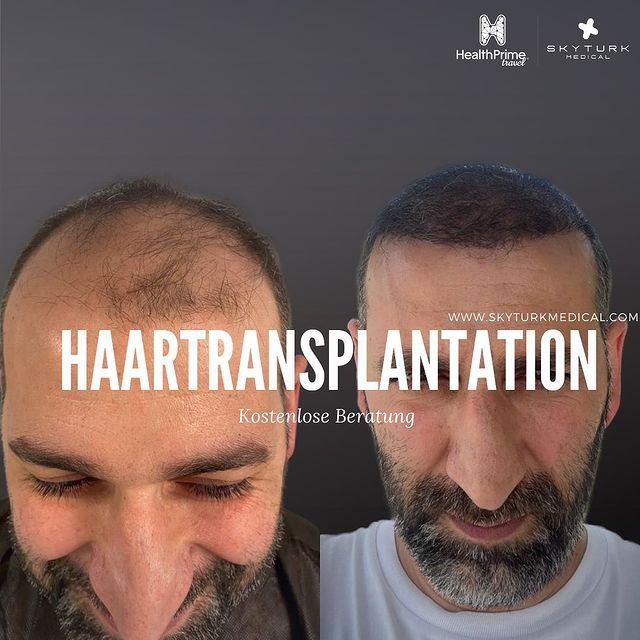
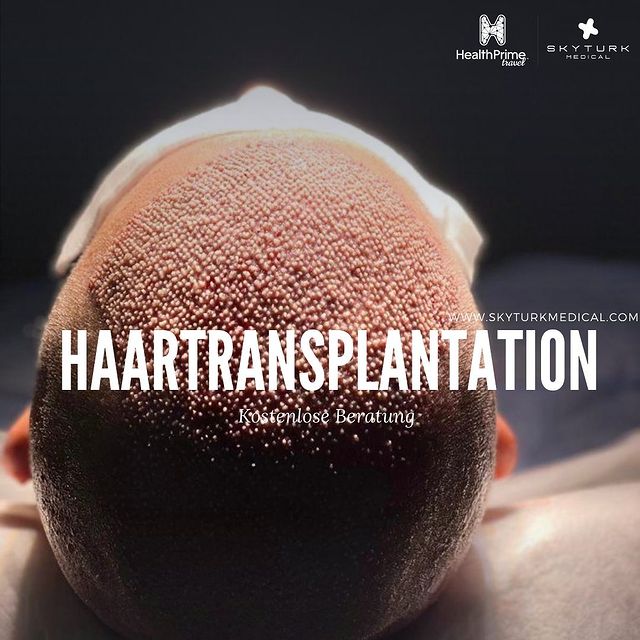
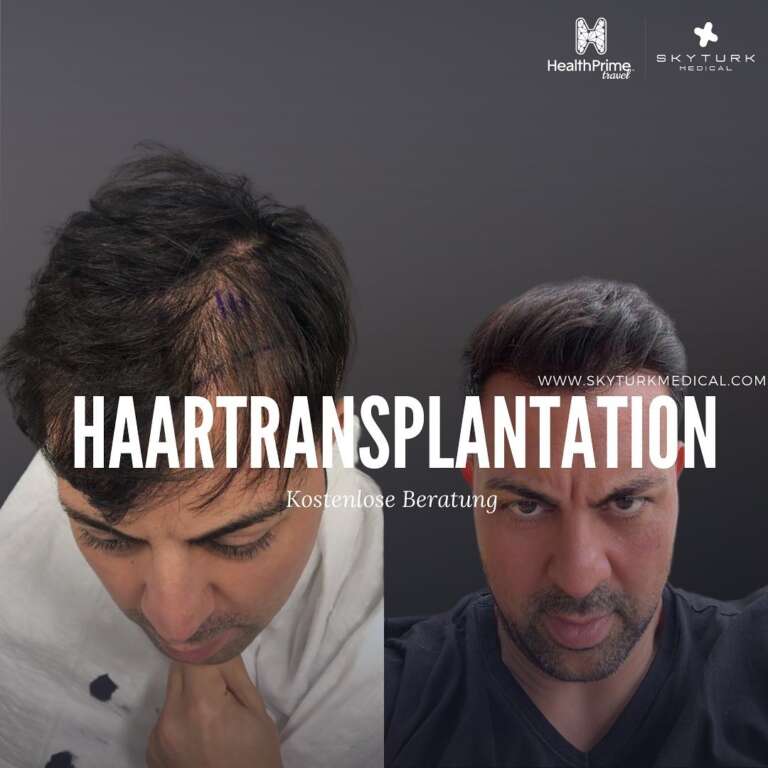
Skyturk Medical is proud of its more than 10.000 Patients from all over the world who have attended in the last 10 years Skyturk Medical one hair transplant have undergone. As a pioneer of health tourism in Turkey, we introduce you to the excellent results of our patients.
A hair transplant is a surgical procedure in which hair is transplanted from part of the body, usually the back of the head, to bald spots or areas with thinning hair. The procedure is often used in men with hereditary hair loss.
There are two common methods of hair transplantation: the FUT (Follicular Unit Transplantation) method and the FUE (Follicular Unit Extraction) method. In the FUT method, a strip of skin is removed from the donor area and broken down into individual hair follicles, which are then placed in the recipient sites. With the FUE method, the individual hair follicles are taken directly from the donor area and implanted in the bald areas.
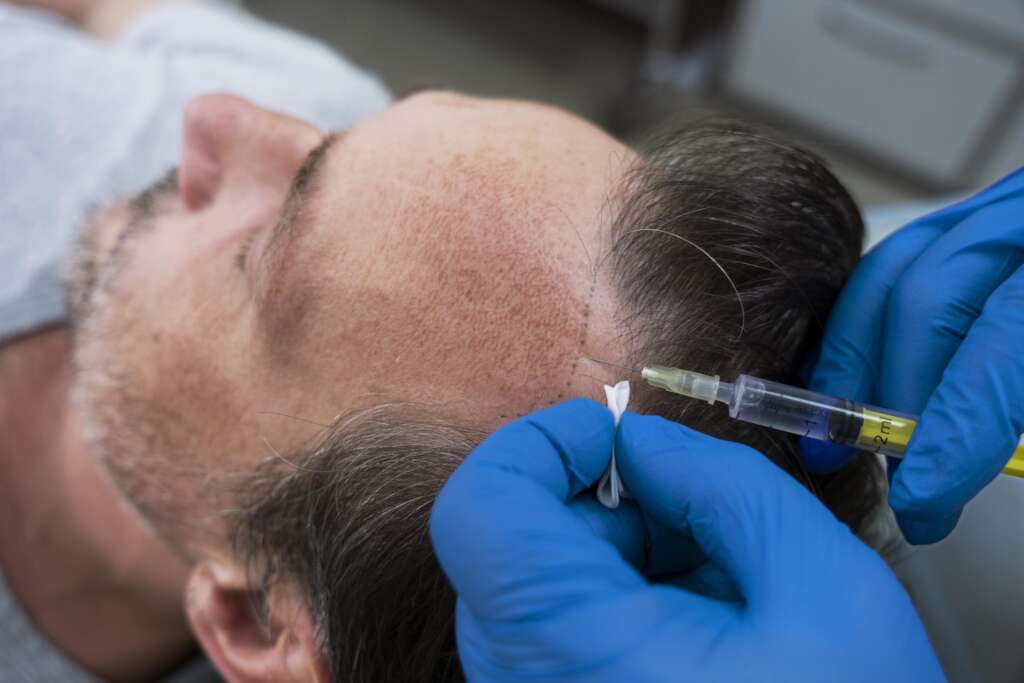
The healing process after a hair transplant can take a few weeks. It is important to follow the doctor's postoperative instructions and to protect the transplanted areas from exposure to the sun and heavy physical contact.
Hair transplants can be effective in restoring the appearance of full hair, but it is important to note that they do not guarantee perfect results. Each case is unique and results may vary from person to person.
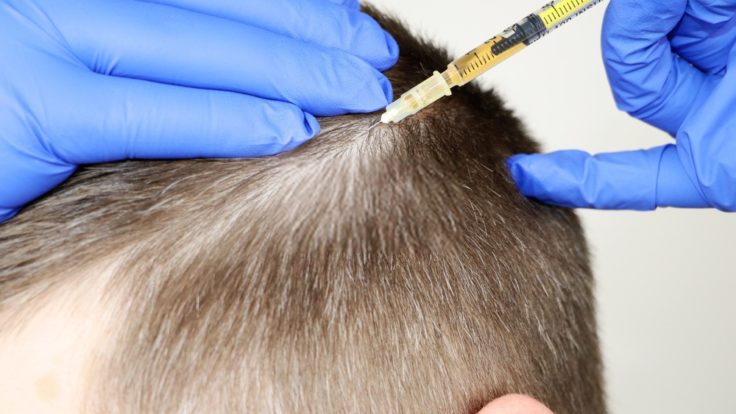
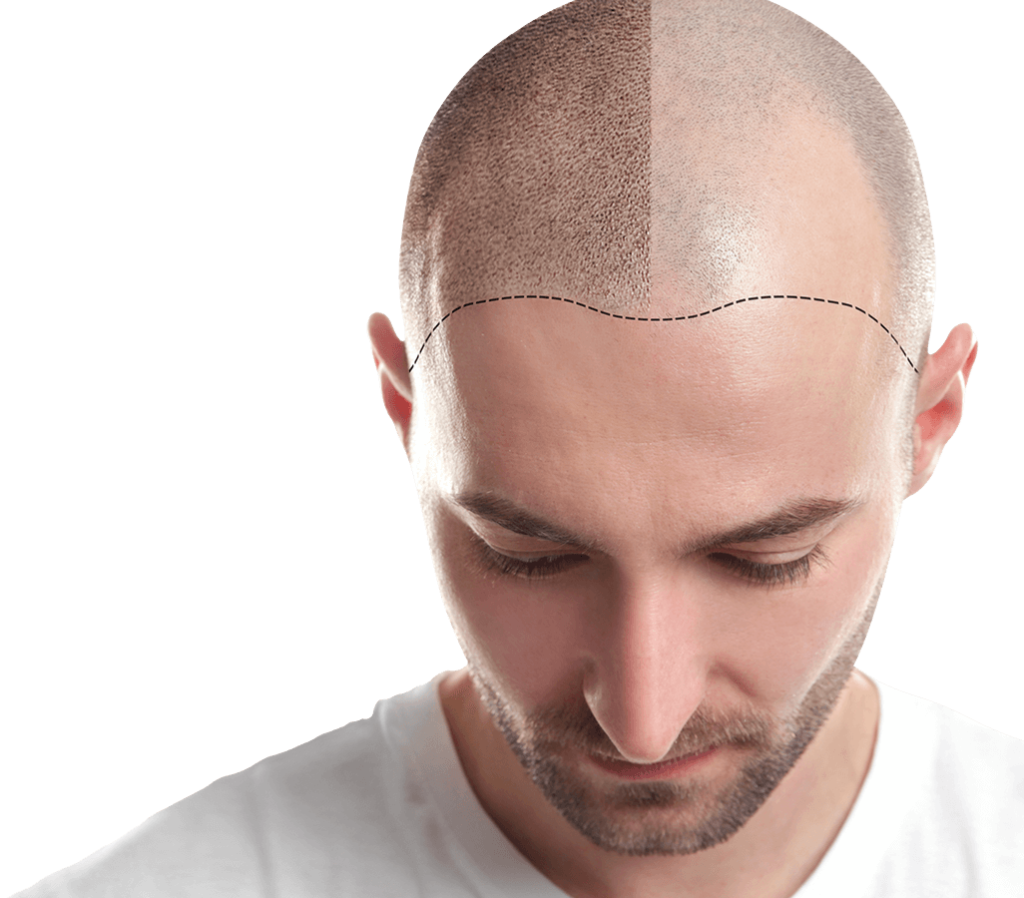
Currently, hair transplantation is the only proven hair restoration method with permanent results. The cheap price attracts Turkish patients from all over the world, but not all are suitable for the procedure. Responsible hair transplant specialists refuse treatment in the following cases:
Rest and Recovery: After hair transplantation, it is important to get enough rest and recovery. Avoid physical exertion and follow your doctor's instructions.
Gentle washing: After a few days, you can gently wash your hair. Use mild shampoos and avoid vigorous rubbing or scratching of the scalp.
Avoid sun exposure: In the first few weeks after the hair transplant, you should avoid direct sun exposure. If you are outdoors, wear a protective cap or use sunscreen.
No Scratching or Rubbing the Scalp: It is important not to scratch or rub the transplanted hair and scalp as this may interfere with healing. Keep your hands clean and avoid contact with the transplanted area.
Taking medication: Your doctor may prescribe specific medication to help the healing process and promote the growth of the transplanted hair. Make sure you take the medication as directed.
Regular check-ups: Arrange regular check-ups with your doctor to monitor the progress of healing and identify possible complications at an early stage.
No Alcohol and Smoking: Alcohol and smoking can interfere with the healing process. It is recommended to avoid alcohol and smoking for the first few weeks after hair transplantation.
Be patient: The final result of hair transplantation is not visible immediately. It takes a few months for the transplanted hair to fully grow and adapt to its new environment. Be patient and follow your doctor's instructions.
In hair transplantation, hair follicles are transplanted into bald or sparsely haired areas. This procedure uses hair follicles, which can grow naturally and provide permanent results.
Hair transplantation is usually performed using Follicular Unit Extraction (FUE) or Follicular Unit Transplantation (FUT) methods. In FUE, individual hair follicles are removed and transferred to the recipient area, while in FUT, a strip of skin is removed and hair follicles are detached from this strip and transplanted.
Hair transplantation is usually performed under local anesthesia, so the sensation of pain during the procedure is minimal. Some patients may experience slight discomfort or pressure but are generally resistant to pain.
Suitable candidates for a hair transplant are people with healthy hair follicles, usually with hair loss or sparse hair. Top candidates include people with a healthy hair donation area and good general health.
After a hair transplant, the transplanted hair may fall out in the first few weeks. However, new hairs begin to appear, usually within 3 to 6 months after the new hair growth process begins. Complete results and full hair growth are usually to be expected